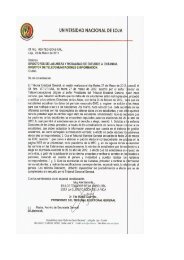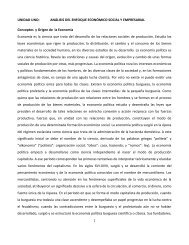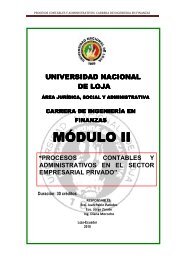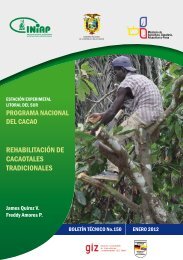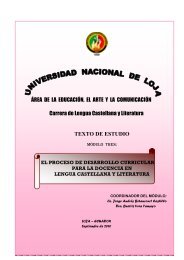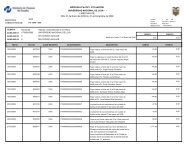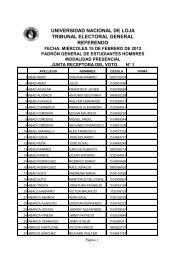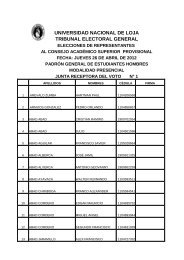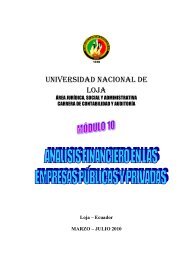module 5 planning of the english language teaching-learning process
module 5 planning of the english language teaching-learning process
module 5 planning of the english language teaching-learning process
You also want an ePaper? Increase the reach of your titles
YUMPU automatically turns print PDFs into web optimized ePapers that Google loves.
UNIVERSIDAD NACIONAL DE LOJA<br />
Área de la Educación el Arte y la Comunicación<br />
English Language Career<br />
Vocabulary<br />
Characteristics and Techniques: The pictures can be displayed quickly and is<br />
complexity can provide a rich source <strong>of</strong> vocabulary practice.<br />
The students call out in, say, five minutes ail <strong>the</strong> words <strong>the</strong>y remember which can be<br />
related to <strong>the</strong> pictures. More advanced students can be restricted to certain kinds <strong>of</strong>,<br />
words, for example adjectives. One our two students "secretaries" write down all <strong>the</strong><br />
words given by <strong>the</strong> class on <strong>the</strong> board.<br />
As <strong>the</strong> students call out <strong>the</strong> words you should make a rapid note <strong>of</strong> <strong>the</strong>n. (Alternatively<br />
be ready to cover <strong>the</strong> board with paper or a cloth).<br />
When all <strong>the</strong> words have been written down, give <strong>the</strong> students a moment to look at<br />
<strong>the</strong>m and <strong>the</strong>n erase <strong>the</strong>m. Each student <strong>the</strong>n tries to remember all <strong>the</strong> words and to<br />
write <strong>the</strong>m down. After five minutes ask <strong>the</strong> students to work with <strong>the</strong>ir neighbor and to<br />
compile a joint list. After ano<strong>the</strong>r five minutes ask pairs <strong>of</strong> students to work toge<strong>the</strong>r in<br />
groups <strong>of</strong> four to compile <strong>the</strong>ir final composite list. Tell <strong>the</strong> students to put <strong>the</strong>ir words<br />
into alphabetical order. See which group remembers <strong>the</strong> most words.<br />
Listening comprehension<br />
Characteristics and techniques: <strong>the</strong> variety and complexity <strong>of</strong> information in <strong>the</strong> wall<br />
picture mean that students must listen or read very carefully in order to identify what is<br />
being referred to.<br />
The teacher describes: 1 a person's appearance in <strong>the</strong> picture 2 a person's thoughts 3<br />
an object 4 what <strong>the</strong> teacher thinks about anything in <strong>the</strong> picture. The students try to<br />
say who or what is being described. The description can be easy both conceptually and<br />
linguistically or be very demanding in both senses. Here is a description intended for<br />
beginners:<br />
TEACHER: He is thinking. I must go slowly. It's dangerous/<br />
STUDENT A: The man on <strong>the</strong> motorbike.<br />
TEACHER: Yes.<br />
A more demanding example:<br />
TEACHER: What a wonderful quiet place to retreat to in <strong>the</strong> lunch break.<br />
STUDENT B: The Park.<br />
TEACHER: Yes.<br />
[Escribir texto] Página 123



